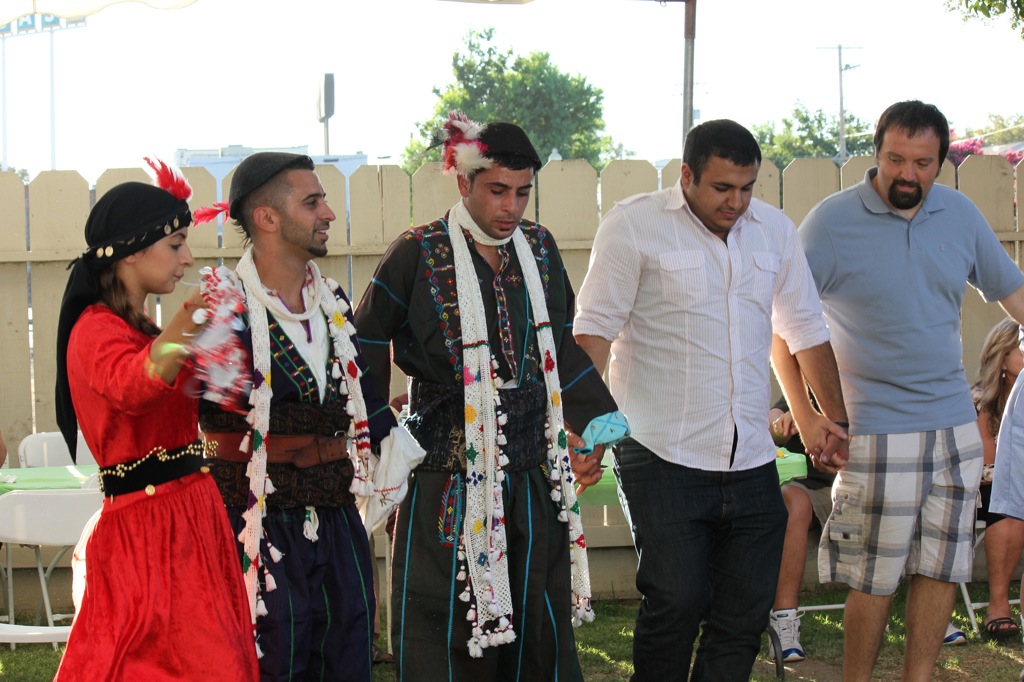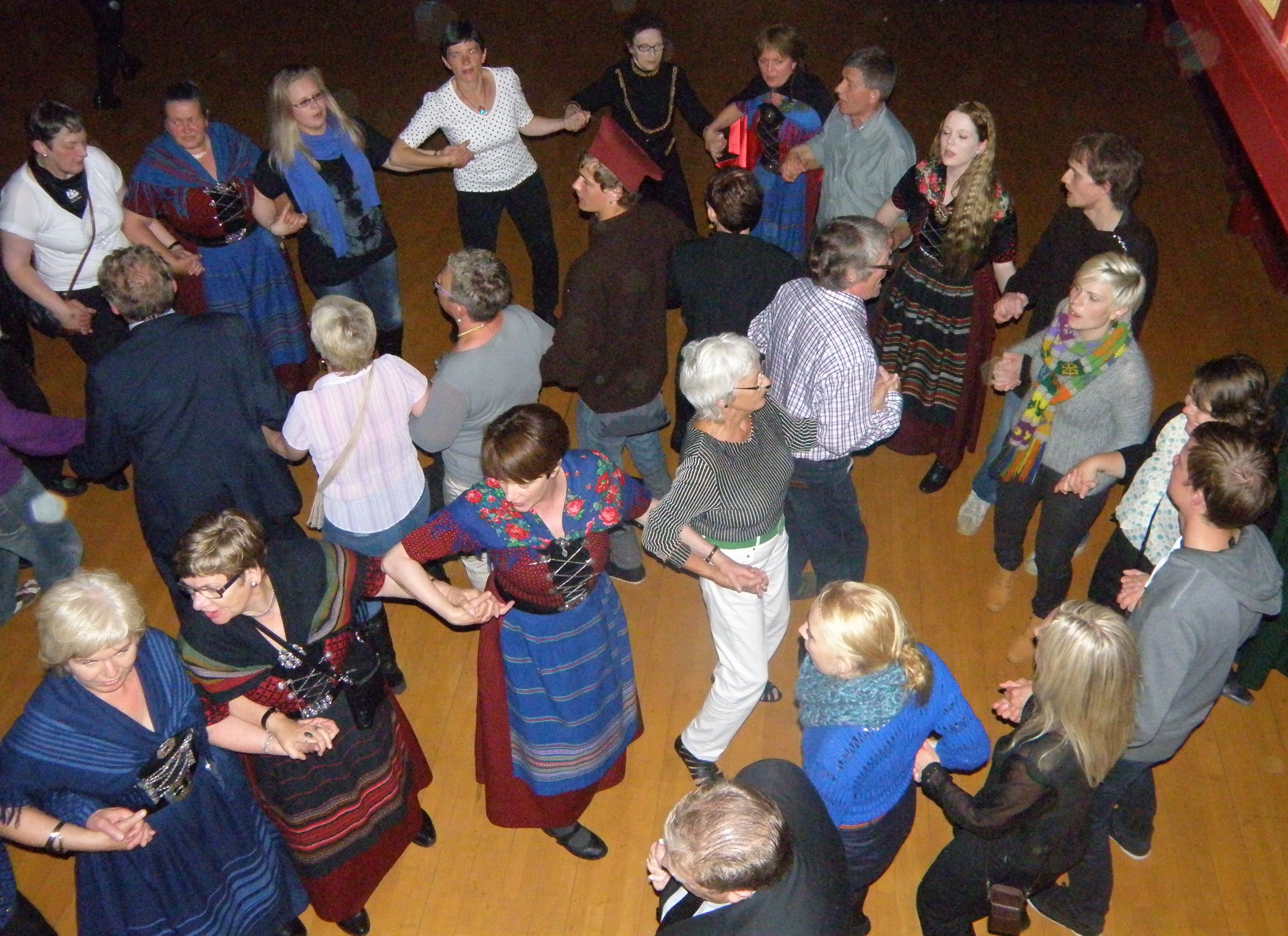|
Tamzara
Tamzara ( hy, Թամզարա, translit=T'amzara; aii, ܬܢܙܪܐ, translit=Tanzara; az, Tənzərə; el, Τάμσαρα, translit=Támsara; tr, Tamzara) is a folk dance native to Armenian Highlands. It is today performed by Armenians, Assyrians, Azerbaijanis (in the regions of Sharur, Nakhchivan and parts of Iranian Azerbaijan), and Greeks. The word Tamzara means "half gilt" or "half decoration". The women dancing used to wear golden items including necklaces, beads, rings, ear-rings and other jewelry and those women expressed beauty and brightness, to which the name alludes. This dance was also especially popular in the formerly Armenian-populated regions of Erzincan, Erzurum, Kigi, Arapgir, Harput, and Malatya. There are many versions of Tamzara, with slightly different music and steps, coming from the various regions and old villages in the Armenian Highlands. History and description Legend has it that the dance was brought to Armenia by the ancient Assyrians dur ... [...More Info...] [...Related Items...] OR: [Wikipedia] [Google] [Baidu] |
Syrtos
Syrtos ( el, συρτός, ''syrtos'' (also ''sirtos''); plural , ''syrtoi'' (also ''sirtoi''); sometimes called in English using the Greek accusative forms ''syrto'' (also ''sirto''); from the el, links=no, σύρω, ''syro'' (also ''siro''), "to drag he dance) is – in classical and modern Greece – a traditional dance in which the dancers link hands to form a chain or circle, headed by a leader who intermittently breaks away to perform improvised steps. Syrtos, along with its relative kalamatianos, are the most popular dances throughout Greece and Cyprus, and are frequently danced by the Greek diaspora worldwide. They are very popular in social gatherings, weddings and religious festivals. Syrtos and kalamatianos use the same dance steps, but the syrtos is in time and the kalamatianos is in time, organized in a ''slow'' (3 beat), ''quick'' (2 beat), ''quick'' (2 beat) rhythm. Syrtos and kalamatianos are line dances and circle dances, done with the dancers in a ... [...More Info...] [...Related Items...] OR: [Wikipedia] [Google] [Baidu] |
Khigga
Khigga is a style of Assyrian folk dance in which multiple dancers hold each other's hands and form a semi-circle or a curved line. There are multiple foot patterns that dancers perform. Its thought to have been danced for thousands of years. It is one of the most common and simplest Assyrian folk dances, generally performed at weddings and other joyous occasions. Set in common time, khigga is accompanied by a moderate dance beat and is usually performed to Assyrian folk/pop music. To note, the term ''Khigga'' is occasionally used to denote all the Assyrian folk circle dances, i.e. "Khigga'd Belaty" ("Khigga of Belaty"), "Khigga'd Gubareh", etc.THIRTY ASSYRIAN FOLK DANCES by Pete Pnuel Bet Basoo from AINA Background Khigga is traditionally danced with music played on the |
Kalamatianos
The Kalamatianós ( el, Καλαματιανός) is one of the best known dances of Greece. It is a popular Greek folkdance throughout Greece, Cyprus and internationally and is often performed at many social gatherings worldwide. As is the case with most Greek folk dances, it is danced in chain with a counterclockwise rotation, the dancers holding hands. It is a joyous and festive dance; its musical beat is , subdivided into of three parts of 3+2+2 beats, corresponding to 3 steps per bar. There are 12 steps in the dance corresponding to 4 bars of music. These steps include 10 steps counterclockwise ("forward") followed by 2 steps clockwise ("backwards"). Depending on the occasion and the dancers' proficiency, certain steps may be taken as jumps or squats. The lead dancer usually holds the second dancer by a handkerchief, this allowing him or her to perform more elaborate steps and acrobatics. The steps of the Kalamatianós are the same as those of the Syrtos, but the l ... [...More Info...] [...Related Items...] OR: [Wikipedia] [Google] [Baidu] |
Faroese Dance
The Faroese chain dance ( fo, Føroyskur dansur, da, Kædedans) is the national circle dance of the Faroe Islands, accompanied by kvæði, the Faroese ballads. The dance is a typical mediaeval ring dance. The dance is danced traditionally in a circle, but when there are many dancers, they usually let it swing around in various wobbles within the circle. Dance rules When dancing there are a few rules. One is that your right hand must overlap the left hand of the one next to you while moving your feet two paces to the left and one pace back. The "skipari" is the one who sings and must know all the verses, while the people who are dancing with him in the circle join in at the chorus. ''The following description is by V. U. Hammershaimb, ''Færøsk Anthologi'', 1891:'' The storyline of the ballad is attended by everybody with great interest, and if something especially pleasant or moving occurs, it can be seen in the look and movement of the dancers – when the rage of the battl ... [...More Info...] [...Related Items...] OR: [Wikipedia] [Google] [Baidu] |
An Dro
An dro or ''en dro'' (Breton: "The Turn") is a Breton folk dance in . It is a form of a circle dance. Technique The dancers link little fingers in a long line, swinging their arms, and moving to their left by taking longer steps in that direction than when stepping right. In the generic case the arm movements consist first of two circular motions going up and back (at about chest level) followed by one in the opposite direction (down then front); these are done quite close to the body. This is then followed by a circle in the same sense as the last (down then front) but with full arm extension and extending behind the body. The cycle then repeats. Steps Stepping is on the beat throughout, moving to the left on the close arm circles and in place (or sometimes to the right) on the second two. The stance is upright, with soft knees. A full set of steps takes 8 times, divided in two half-steps: *1st half-step, 4 counts: ** 1st count: the left foot moves on the left ** 2nd count: t ... [...More Info...] [...Related Items...] OR: [Wikipedia] [Google] [Baidu] |
Circle Dance
Circle dance, or chain dance, is a style of social dance done in a circle, semicircle or a curved line to musical accompaniment, such as rhythm instruments and singing, and is a type of dance where anyone can join in without the need of partners. Unlike line dancing, circle dancers are in physical contact with each other; the connection is made by hand-to-hand, finger-to-finger or hands-on-shoulders, where they follow the leader around the dance floor. Ranging from gentle to energetic, the dance can be an uplifting group experience or part of a meditation. Being probably the oldest known dance formation, circle dancing is an ancient tradition common to many cultures for marking special occasions, rituals, strengthening community and encouraging togetherness. Circle dances are choreographed to many different styles of music and rhythms. Modern circle dance mixes traditional folk dances, mainly from European or Near Eastern sources, with recently choreographed ones to a va ... [...More Info...] [...Related Items...] OR: [Wikipedia] [Google] [Baidu] |
Line Dance
A line dance is a choreographed dance in which a group of people dance along to a repeating sequence of steps while arranged in one or more lines or rows. These lines usually face all in the same direction, or less commonly face each other.Knight, Gladys L. (2014). ''Pop Culture Places: An Encyclopedia of Places in American Popular Culture'', p.102. ABC-CLIO. .Lane, Christy (2000/1995). ''Christy Lane's Complete Book of Line Dancing'', p.2-4. Human Kinetics. .Zakrajsek, Dorothy; Carnes, Lois; and Pettigrew, Frank E. (2003). ''Quality Lesson Plans for Secondary Physical Education, Volume 1'', p.188. Human Kinetics. . Unlike circle dancing, line dancers are not in physical contact with each other. Each dance is usually associated with, and named for, a specific song, such as the Macarena (both eponymous) or Electric Slide (associated with the 1982 single "Electric Boogie") are a few of the line dances that have consistently remained part of modern American culture for years. Line da ... [...More Info...] [...Related Items...] OR: [Wikipedia] [Google] [Baidu] |
UNESCO Lists Of Intangible Cultural Heritage
UNESCO established its Lists of Intangible Cultural Heritage with the aim of ensuring better protection of important intangible cultural heritages worldwide and the awareness of their significance.Compare: This list is published by the Intergovernmental Committee for the Safeguarding of Intangible Cultural Heritage, the members of which are elected by State Parties meeting in a General Assembly. Through a compendium of the different oral and intangible treasures of humankind worldwide, the programme aims to draw attention to the importance of safeguarding intangible heritage, which UNESCO has identified as an essential component and as a repository of cultural diversity and of creative expression. The list was established in 2008 when the 2003 Convention for the Safeguarding of the Intangible Cultural Heritage took effect. the programme compiles two lists. The longer, Representative List of the Intangible Cultural Heritage of Humanity, comprises cultural "practices and expressio ... [...More Info...] [...Related Items...] OR: [Wikipedia] [Google] [Baidu] |
Kochari
Kochari (, , , , ) is a folk dance originating in the Armenian Highlands. It is performed today by Armenians, while variants are performed by Assyrians, Azerbaijanis (yalli, uchayag, and tello), Kurds (dilan, delîlo, and sêxanî), and Pontic Greeks (kotsari). It is a form of circle dance. Each region in the Armenian Highlands had its own Kochari, with its unique way of both dancing and music. Etymology *In Armenian, "Kochari" literally means "knee-come". Գուճ (gudj or goudj) means "knee" and արի (ari) means "come". *In Azerbaijani Turkish, "köç" means "to move" used both as a verb and as a noun, with the latter used more in the context of nomads' travelling. "Köçəri" is also both an adjective and a noun, meaning a "nomad" and "nomadic" simultaneously. Likewise, Kurdish "koçer" means "nomad," and thus the term "Koçerî" means "nomadic," which was borrowed from Turkish. *In Pontic Greek, from the Greek "κότσι" (in Pontic Greek "κοτς") meaning "heel" ... [...More Info...] [...Related Items...] OR: [Wikipedia] [Google] [Baidu] |
Halay
Halay is the national dance of Turkey and a regional category of folk dance styles in central, southern, eastern, and southeastern regions of the country. It is mainly performed by Turks, Arabs, and Kurds in Turkey. Halay and similar dances are parts of multiple ancient folk dance traditions and cultures throughout the Middle East and regions in proximity. These dances are mostly found in weddings and generally accompanied by zurna and davul, but in the recent years, electronic instruments have started to replace them. Typically, Halay dancers form a circle or a line, while holding each other in many ways, such as finger to finger, shoulder to shoulder, or hand to hand. The last and the first player may hold a piece of cloth. It usually begins slow and speeds up. Due to the restrictions concerning COVID-19 pandemic in Turkey Halay dance had been restricted in weddings. Because of the pandemic weddings were required people to hold sticks connecting each other, rather than their h ... [...More Info...] [...Related Items...] OR: [Wikipedia] [Google] [Baidu] |



.jpg)
.png)